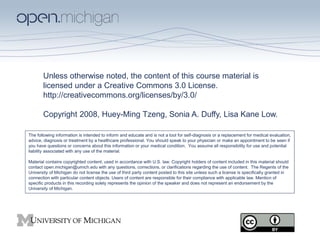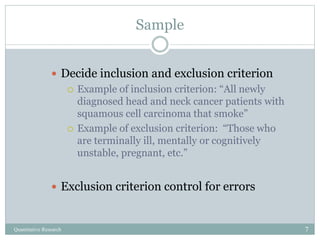This document discusses quantitative research methods and designs. It provides definitions and examples of randomized controlled trials, non-randomized designs, case-control studies, cohort studies, and other quantitative research approaches. Key aspects of study design discussed include sampling, randomization, blinding, interventions, outcomes, phases of clinical trials, and addressing threats to internal and external validity. A variety of research designs are summarized that can be used to investigate causal relationships between variables.















































